What you’ll learn:
- Semaglutide is a GLP-1 receptor agonist that helps lower appetite, slow digestion, and regulate blood sugar.
- Semaglutide is available as weekly injections in Wegovy® and Ozempic®, or as a daily pill called Rybelsus®.
- Wegovy is approved for weight loss, while Ozempic® and Rybelsus® can only be prescribed off-label for weight loss.
GLP-1 medications have changed how people and doctors approach weight management. At the heart of this shift is semaglutide, a compound that’s helped redefine what medical support for weight care can look like. Semaglutide is the active ingredient in Ozempic®, which became famous for off-label weight loss.
While GLP-1s have been around for treating type 2 diabetes since 2005, things changed when Ozempic® was approved in 2017. People noticed that, along with helping manage blood sugar, many were also losing a significant amount of weight with a once-weekly dose. Ozempic® quickly became a popular off-label option for weight loss until Wegovy® was approved for weight loss in 2021.
Wegovy became the first semaglutide-based medication officially approved for weight management. But if you’re considering taking a medication to help you lose weight, it might help to know more about semaglutide. What is semaglutide, and why has it led to such a shift in how weight is medically managed?
We’ll break down how it works, how dosages are managed for steady progress, and what weight loss typically looks like while taking it. Plus, we’ll go through cost considerations, side effects, and what to know before getting started. Let’s take a closer look.
What is semaglutide?
Semaglutide mimics GLP-1 (glucagon-like peptide-1), a gut hormone made by special cells in your intestines. When you eat, it sends signals to GLP-1 receptors throughout your body. You have GLP-1 receptors in your:
- Digestive system: It slows down how quickly food leaves your stomach, which helps you feel full longer.
- Brain: It lowers appetite and reduces cravings.
- Pancreas: It helps your pancreas balance blood sugar by releasing insulin only when needed and reducing glucagon, which prevents sugar spikes.
Did you know: You can naturally boost GLP-1 levels through healthy habits, such as eating fiber- and protein-rich foods, exercising, and getting enough sleep. But taking semaglutide is more powerful and longer-lasting than natural GLP-1 boosts.
Why did it become popular for weight loss/diabetes?
GLP-1 medications weren’t new when semaglutide was approved, but it quickly changed the landscape. Saxenda® (liraglutide) was the first GLP-1 approved for weight loss back in 2014, but it required a daily injection and produced more modest results. When Ozempic® was approved for type 2 diabetes in 2017, people and clinicians started noticing something different: the once-weekly dose was easier to stick with, and many people were losing a meaningful amount of weight even though that wasn’t its main purpose.
That set the stage for Wegovy®, which was approved in June 2021 as the first high-dose semaglutide specifically for weight management. The clinical results were stronger than anything that had been seen, which helped propel it from a new medication to a cultural moment. Add in its weekly dosing, wide media attention, and strong word-of-mouth from people using Ozempic off-label, and Wegovy quickly became the most recognized and in-demand GLP-1 for weight loss.
Semaglutide medications: Ozempic®, Wegovy®, and Rybelsus®
There are three medications that are made with semaglutide: Ozempic®, Wegovy®, and Rybelsus®. Even though they all contain the same active ingredient, they’re made for different purposes. Let’s take a look at them:
Ozempic®:
- What it’s for: Ozempic® is officially approved to help manage type 2 diabetes, but many providers also prescribe it off-label for weight loss.
- How it’s taken: It’s a once-weekly injection you give yourself under the skin (usually in your stomach, thigh, or arm).
- Doses: 0.25 mg, 0.5 mg, 1 mg, and 2 mg
Learn more: Ozempic® for weight loss: Benefits, dosage, side effects, and FAQs
Wegovy®:
- What it’s for: Wegovy® is approved for weight management, to help reduce the risk of heart disease, and to treat MASH. It’s typically prescribed to people with a BMI of 30 or higher, or 27+ with a weight-related condition (like high blood pressure or high cholesterol).
- How it’s taken: It’s also a once-weekly injection.
- Doses: 0.25 mg, 0.5 mg, 1 mg, 1.7 mg, and 2.4 mg
Learn more: What is Wegovy®: Exploring the weight loss benefits, side effects, and cost
Rybelsus®:
- What it’s for: Rybelsus® is approved for type 2 diabetes, but some providers prescribe it off-label for weight loss.
- How it’s taken: It’s a daily oral tablet, taken first thing in the morning on an empty stomach with a small sip of water—then you wait about 30 minutes before eating or drinking anything else.
- Doses: Rybelsus® comes in two main versions right now: R1 and R2.
- R1: This is the original version. It comes in doses of 3 mg, 7 mg, and 14 mg. The usual path is to start at 3 mg once daily for about 30 days, then move up to 7 mg daily, and if needed (and tolerated), up to 14 mg.
- R2: Think of this as the “newer upgrade.” It uses the same active ingredient but is formulated for better absorption in the gut. That means you can take lower doses (1.5 mg, 4 mg, and 9 mg) and get similar results as the older version. Most people start with 1.5 mg for about 30 days, bump to 4 mg, and if needed, go to 9 mg.
Learn more: What is Rybelsus®: Weight loss, side effects, and cost
Semaglutide: Weight loss potential
Weight loss with semaglutide happens over time. The amount you lose depends on what brand you’re taking, the dose, and your lifestyle. Clinical studies give a good sense of what’s typical when semaglutide is used consistently alongside healthy habits like balanced eating and regular movement.
Wegovy®
Wegovy® has shown the most impressive results among semaglutide medications. In a long-term study lasting nearly two years, people using Wegovy® with lifestyle changes lost an average of about 15% of their body weight.
Learn more: What is Wegovy®? Exploring the weight loss benefits, side effects, and cost
Ozempic®
Ozempic® was first approved for type 2 diabetes, but many noticed meaningful weight loss, too. A study shows that for over 40 weeks, people taking the highest dose (2 mg weekly) lost an average of 7% of their body weight. Ozempic® and Wegovy® are the same medication at different doses. People tend to lose more weight taking the highest dose (2.4 mg) of Wegovy.
Learn more: Ozempic® for weight loss: How it works and what to expect
Rybelsus®
Rybelsus®—the pill version of semaglutide—tends to show more modest results because of how semaglutide is absorbed through the digestive tract. In a six-month study, people taking the 14 mg daily dose lost around 4% of their body weight.
Newer studies on higher doses of semaglutide in pill form (25 mg and 50 mg) show that it can lead to greater weight loss, approaching the injectable versions. In one trial, the 25 mg dose led to an average 7% weight loss, while the 50 mg dose led to an average of 15% weight loss.
Learn more: What is Rybelsus®? Exploring the weight loss benefits, side effects, and cost
What’s the difference between Wegovy and Ozempic?
Ozempic® and Wegovy® both contain injectable semaglutide and are both manufactured by Novo Nordisk. The main difference comes down to what they’re approved for and the available doses. Wegovy® can be prescribed up to 2.4 mg while Ozempic has a maximum dose of 2 mg. So, while both medications work in the same way, the one your doctor prescribes typically depends on whether your main goal is managing diabetes or losing weight.
Learn more: Ozempic® vs. Wegovy® for weight loss: Which one works best?
How quickly will I lose weight with semaglutide?
Research shows that weight loss with injectable semaglutide is dose-dependent—meaning higher doses usually bring greater progress over time. Here’s a general look at one study found:
- Lower doses (0.25 mg, 0.5 mg, and 1 mg):
- Around 5% weight loss after 3 months
- About 9% weight loss after 6 months
- Higher doses (1.7 mg, 2 mg, and 2.4 mg):
- Around 7% weight loss after 3 months
- About 12% weight loss after 6 months
Keep in mind these are just averages—everyone’s pace is different. Eating nutritious, lower-calorie meals and regular movement helps semaglutide do its job more effectively, making it easier to lose weight at a healthy, sustainable pace.
How long can you safely take semaglutide?
You can safely take semaglutide for the long term. The longest studies on the medication have followed people using it for around two years, and it’s been shown to be both safe and effective over that time.
That said, how long you take it really depends on your personal goals and how your body responds, which is something you’ll decide together with your doctor.
Learn more: Understanding how long you can stay on Ozempic®
Can you stop taking semaglutide abruptly?
If you’re thinking about stopping semaglutide, talk to your doctor first. Stopping too suddenly can cause your appetite to return quickly, which may make it harder to keep the weight off. Most people do better with a slow taper, giving the body time to find its balance again while keeping results more stable.
Learn more: Tips for keeping weight off after Wegovy®
Semaglutide: Cost and insurance
Semaglutide can be a powerful tool for both diabetes management and long-term weight care, but it can also be expensive. All three versions of the medication (Wegovy®, Ozempic®, and Rybelsus®) are brand-name only, meaning there’s no generic option yet.
The list prices can be steep:
- Wegovy®: Around $1,350 per month
- Ozempic®: About $998 per month
- Rybelsus®: Roughly $998 per month
Your actual cost depends on insurance coverage, savings programs, and pharmacy pricing. Here’s a closer look at how costs and coverage work for each medication:
Wegovy®
Wegovy® can be a bit pricey, especially since insurance doesn’t typically cover weight loss medications. Most insurance plans still treat obesity as a “lifestyle issue” rather than a medical condition, which means coverage for drugs like Wegovy® is often limited or excluded altogether. That said, some people do get partial coverage or savings through manufacturer programs—it really just depends on your plan and your provider.
Lowest price option:
If you’re uninsured or your plan doesn’t cover Wegovy®, NovoCare® Pharmacy offers Wegovy for $199 per month for the first two months at the 0.25 mg and 0.5 mg doses. Then $349 for all other doses.
Learn more: Wegovy® costs in 2025: With and without insurance coverage
Ozempic®
Ozempic® can get expensive, especially if you’re using it off-label for weight loss, because, again, most insurance plans won’t cover it for that purpose. If you are using it to manage diabetes, coverage is more common, and many people pay far less out of pocket.
Lowest price option:
If you’re uninsured or your plan doesn’t cover Ozempic®, NovoCare® Pharmacy offers it for $199 per month for the first two months at the 0.25 mg and 0.5 mg doses. Then $349 per month for the 0.25 mg, 0.5 mg, and 1 mg doses. The 2 mg dose is $499 per month.
Learn more: 2025 guide to Ozempic® pricing: Your costs with and without insurance
Rybelsus®
NovoCare® Pharmacy doesn’t currently offer Rybelsus at a discount, so you’ll likely pay full price unless your insurance covers it for diabetes.
Learn more: Rybelsus® costs in 2025: With and without insurance coverage
Why isn’t there a generic for semaglutide?
All semaglutide medications—Wegovy®, Ozempic®, and Rybelsus®—are still brand-name only. Novo Nordisk, the manufacturer, holds the main U.S. patent on semaglutide until 2032, which means no generic versions can be made until then.
Once that patent expires, other companies may be able to produce generic forms, which could help bring prices down and make these medications more accessible.
Rx weight loss, the right way, with Noom
Get access to prescription weight loss medication with Noom.Semaglutide: Dosage and how to take it
Semaglutide medications—Wegovy®, Ozempic®, and Rybelsus®—are all started the same way: with a low dose that’s gradually increased over time. This slow, step-up process, known as titration, helps your body adjust and reduces side effects as you work toward your maintenance dose—the level that keeps your progress steady and sustainable.
Here’s a quick look at the available dose ranges for each:
| Wegovy® | Ozempic® | Rybelsus® |
|---|---|---|
| 0.25 mg (starting dose) 0.5 mg 1 mg 1.7 mg 2.4 mg (maximum dose) Learn more: Wegovy® dosage guide | 0.25 mg (starting dose) 0.5 mg 1 mg 2 mg (maximum dose) Learn more: Ozempic® dosage guide | R1 formulation: 3 mg (starting dose) 7 mg 14 mg (maximum dose) R2 formulation: 1.5 mg (starting dose) 4 mg 9 mg (maximum dose) Learn more: Rybelsus® dosage guide |
Your dose will typically be adjusted every 4 weeks for Wegovy® and Ozempic®, or every 30 days for Rybelsus®. The maintenance dose—the one you stay on long-term—can look different for each person, as the goal is to find the dose that supports steady progress and manageable side effects. Your provider will guide you through this process to make sure the medication works safely and effectively for your goals.
Learn more: Semaglutide: Finding the right dose for weight loss
Where can I get a prescription for semaglutide for weight loss?
Qualified healthcare professionals can prescribe semaglutide. For weight loss, Wegovy® is usually the go-to option; Ozempic and Rybelsus can be prescribed off-label for weight loss.
You can get a prescription through your primary care provider or see if you qualify for Noom Med. Our clinicians can evaluate your needs, prescribe semaglutide if appropriate, and help you stay on track with your weight-loss goals.
Learn more: Wegovy® and Ozempic® prescriptions
Is the dose of semaglutide different for weight loss vs. diabetes?
Yes. The maintenance dose varies based on the condition being treated. For weight loss, semaglutide is typically prescribed at higher doses than for type 2 diabetes. Wegovy® is titrated up to 2.4 mg weekly, while diabetes formulations like Ozempic® and Rybelsus® use lower ranges.
That said, the “right” dose for either condition is the one that effectively supports blood sugar control or weight loss while minimizing side effects, which is why dosing is gradually increased and tailored to each person.
Dosage adjustments & personalization for weight loss
Here are some of the key factors that influence how your dose is personalized:
- Your response and progress: Some people continue to lose weight on lower doses with fewer side effects. There’s no need to increase if you’re already doing well.
- Side-effect tolerance: If nausea or digestive issues hit hard during a dose increase, your provider may keep you at your current level.
Signs you might need a dose adjustment
Your provider might suggest going up or down a dose if you have any of these experiences:
- Progress has slowed or plateaued: If your weight loss has stalled for several weeks, it may be time to discuss a possible increase. But your provider might also suggest more attention to your diet and moving more.
- Side effects that linger: Persistent nausea, fatigue, or stomach discomfort beyond the adjustment period could mean you need a lower dose.
- Health or medication changes: New prescriptions, illnesses, or life changes can alter how semaglutide works for you. Keeping your provider in the loop helps ensure your plan stays safe and effective.
Finding the right semaglutide does for you takes time, but that balance—between effectiveness and comfort—is what keeps results steady and sustainable long term.
Learn more: Semaglutide: Finding the right dose for weight loss
Semaglutide: Side effects and safety
Semaglutide can cause some side effects, especially when you’re first starting or increasing your dose. These symptoms usually ease as your body adjusts to the medication and as your dose increases gradually. However, some more severe reactions are possible, so it’s important to know when to seek emergency medical attention.
The most common side effects of semaglutide medications
Digestive changes are the most common reactions to semaglutide. Because the medication slows how quickly food leaves your stomach, your digestive system needs time to adjust, especially when your dose increases.
Here’s how common these side effects were in studies using the highest doses tested for each medication, and a few quick ways to manage them:
| Symptom | Wegovy® (2.4 mg) | Ozempic® (1 mg) | Rybelsus® (14 mg) | What can help |
|---|---|---|---|---|
| Nausea | 44% | 20% | 20% | Eat smaller, low-fat meals and skip greasy or spicy foods. |
| Vomiting | 24% | 9% | 8% | Stick to clear fluids and bland foods until you feel better. |
| Diarrhea | 30% | 9% | 10% | Drink plenty of fluids and choose gentle, low-fiber foods. |
| Constipation | 24% | 3% | 5% | Add fiber slowly to your diet and stay hydrated. Light activity may help. |
| Abdominal pain | 20% | 6% | 11% | Take breaks from heavy meals and sip water throughout the day. |
| Dyspepsia (indigestion) | 9% | 3% | 0.6% | Eat slowly and avoid large or late meals. |
| Heartburn / GERD | 5% | 2% | 2% | Avoid lying down right after eating and raise your head while sleeping. |
Most of these side effects are mild and temporary, improving as your body adjusts to the medication. If symptoms feel hard to manage or last longer than expected, talk to your healthcare provider; they might suggest slowing dose increases or adjusting your plan.
Semaglutide injection site reactions
For injectable semaglutide forms like Ozempic® and Wegovy®, mild redness, swelling, or tenderness at the injection site can happen but usually fade quickly. Rotating where you inject—between the stomach, thigh, or upper arm—helps prevent irritation and keeps your skin comfortable.
Learn more: How to manage Ozempic® injection site reactions
Do females experience different side effects with semaglutide?
While semaglutide generally works the same for everyone, some studies suggest females may experience certain effects more strongly—especially digestive ones like nausea or bloating. Weight loss and hormonal shifts can also temporarily affect menstrual cycles or fertility, particularly for those with PCOS.
Learn more:
- Ozempic® side effects in women: How they differ and how to manage them
- Do women experience more side effects with Ozempic®?
Rare but more severe side effects
Serious side effects with semaglutide are uncommon, but it’s important to know what to look for. Acting quickly if something doesn’t feel right can make a big difference.
- Thyroid tumors: Semaglutide comes with an FDA boxed warning about a possible risk of thyroid C-cell tumors. This connection has only been seen in animal studies. Get emergency medical attention if you notice a lump or swelling in your neck, hoarseness, trouble swallowing, or shortness of breath.
- Pancreatitis: Ongoing or severe stomach pain that may move to your back—especially if it comes with nausea or vomiting—could be a sign of pancreatitis. Stop taking the medication and get emergency medical help immediately.
- Gallbladder issues: Pain in the upper right part of your abdomen, fever, nausea, or yellowing of your skin or eyes could mean gallstones or gallbladder inflammation. Get immediate medical attention if you notice these signs.
- Kidney problems: Dehydration from vomiting or diarrhea can strain your kidneys. If you notice fatigue, swelling, or much less urination than normal, contact a doctor immediately.
- Low blood sugar (hypoglycemia): More likely if you’re also on insulin or other diabetes meds. Signs include shakiness, sweating, dizziness, or confusion. Get immediate medical attention if symptoms don’t improve.
- Severe allergic reaction: Though rare, swelling of the face, tongue, or throat; trouble breathing; or a widespread rash means you need emergency medical care immediately.
- Vision changes: If your vision suddenly blurs or shifts, get immediate medical attention.
- Increased heart rate: A resting heart rate that suddenly feels fast or pounding should be reported to your provider.
- Mood changes: New or worsening depression or thoughts of self-harm are a reason to call your healthcare provider right away.
Most people taking semaglutide won’t experience these effects, but staying aware means you’ll know when to reach out for help. If you’re unsure or if your symptoms feel severe, it’s always safest to call your healthcare provider or seek emergency care.
Learn more: Semaglutide side effects: Symptom guide & management tips
Who shouldn’t take semaglutide?
Semaglutide can be highly effective, but it isn’t the best fit for everyone. There are some situations where doctors recommend avoiding or closely monitoring its use.
You shouldn’t take semaglutide if:
- You or a close family member has ever had medullary thyroid carcinoma (MTC) or multiple endocrine neoplasia syndrome type 2 (MEN 2).
- You’re allergic to semaglutide or any of its ingredients.
- You’re pregnant, planning to become pregnant, or breastfeeding.
Your healthcare provider may decide to proceed with caution—or suggest an alternative—if you have:
- A history of pancreatitis, as the medication can increase the risk of recurrence.
- Severe gastrointestinal conditions like gastroparesis, since semaglutide naturally slows digestion and may worsen symptoms.
It’s always best to go over your full medical history before starting. Your provider can help determine if semaglutide fits your health needs and safely guide you through your options.
Learn more:
Semaglutide vs. tirzepatide: What’s the difference?
Semaglutide and tirzepatide are often talked about in the same breath because they both help with weight loss and blood-sugar control—but there are some important differences.
Both medications are considered GLP-1 receptor agonists. But while semaglutide targets just GLP-1, tirzepatide targets both GLP-1 and GIP—a hormone that affects how your body stores and uses fat for energy. That extra hormone action is one reason tirzepatide tends to deliver even stronger weight-loss results in studies.
They’re both powerful medications, and you and your provider will choose the one that fits your health goals, budget, and how your body responds. Here’s a look at the differences:
| Medication | Brand names and uses | Cost per month (without insurance) | Effectiveness | How it’s taken |
|---|---|---|---|---|
| Semaglutide – GLP-1 receptor agonist | Wegovy®: weight loss, heart disease, and MASH Ozempic®: type 2 diabetes Rybelsus®: type 2 diabetes | Wegovy®: $1,350 NovoCare Pharmacy: $199 per month for the first two months $349 for all other doses thereafter Learn more Ozempic®: $998 NovoCare Pharmacy: $199 for the 0.25 mg and 0.5 mg doses for the first 2 months. After that, $349 per month for the .25 mg, 0.5 mg, or 1 mg doses. The 2 mg dose is $499 per month. Learn more Rybelsus®: $998 Learn more | Wegovy® and Ozempic®: People lost an average of 15% of body weight in 104 weeks with injectable semaglutide. Rybelsus®: People lost an average of 4% of their body weight in six months. | Wegovy® and Ozempic®: Weekly injection Rybelsus®: Daily pill |
| Tirzepatide – GLP-1/GIP receptor agonist | Zepbound®: weight loss and obstructive sleep apnea (OSA)Mounjaro®: type 2 diabetes | Zepbound®: Pens: $1,086 Vials: $349 (2.5 mg) $499 (5 mg, 7.5 mg, 10 mg, 12.5 mg, 15 mg) Learn more Mounjaro®: $1,080Learn more | People lost an average of 21% of body weight at 72 weeks. | Weekly injection |
Learn more: Tirzepatide vs. semaglutide for weight loss: Which one works best?
Semaglutide vs. liraglutide: What’s the difference?
Semaglutide and liraglutide are both GLP-1 medications made by Novo Nordisk, and they work in similar ways—helping control appetite, steady blood sugar, and support weight loss. Liraglutide stays in the body for less time, so it requires a daily injection instead of a weekly one. Semaglutide generally produces greater weight-loss results with less frequent dosing. Here’s a look at the differences:
| Medication | Brand names and uses | Cost per month (without insurance) | Effectiveness | How it’s taken |
|---|---|---|---|---|
| Semaglutide – GLP-1 receptor agonist | Wegovy®: weight loss, heart disease, and MASHOzempic®: type 2 diabetesRybelsus®: type 2 diabetes | NovoCare Pharmacy: $199 per month for the first two months $349 for all other doses thereafter Learn more Ozempic®: $998 NovoCare Pharmacy: $199 for the 0.25 mg and 0.5 mg doses for the first 2 months. After that, $349 per month for the .25 mg, 0.5 mg, or 1 mg doses. The 2 mg dose is $499 per month. Learn more Rybelsus®: $998 Learn more | Wegovy® and Ozempic®: People lost an average of 15% of body weight in 104 weeks with injectable semaglutide. Rybelsus®: People lost an average of 4% of their body weight in six months. | Wegovy® and Ozempic®: Weekly injection Rybelsus®: Daily pill |
| Liraglutide – GLP-1 receptor agonist | Saxenda®: weight loss Generic liraglutide: weight loss and type 2 diabetes Victoza®: type 2 diabetes | Saxenda®: $1,350 Learn more. Generic liraglutide: $470 – $700 Victoza®: $800 – $1,400 Learn more | People lost an average of 5-6% of body weight in one year. | Daily injection |
Learn more: Liraglutide vs. semaglutide for weight loss: Which one works best?
Semaglutide vs. other medications: Weight loss potential
Beyond GLP-1s like semaglutide, there are several other prescription options that can help with weight management. Each works a little differently, varies in cost, and offers different levels of effectiveness. Here’s how they compare:
| Medication | Brand names | Cost per month (without insurance) | Effectiveness | How it’s taken |
|---|---|---|---|---|
| Naltrexone and bupropion | Contrave® | $600–$800 CurAccess™: $99 Learn more. | People lost an average of 7 to 8% of their body weight in a year. | Pill taken up to twice daily |
| Metformin (off-label weight loss) | Glucophage®, Fortamet®, Glumetza® | Generic: $4–$15 Brand name: $100–$500+ Learn more. | People lost an average of about 6% of their body weight over six months while taking metformin. | Pill taken up to two times daily |
| Phentermine and topiramate ER | Qsymia® | $180–$260 Learn more. | People lost an average of 10% of their body weight in 56 weeks. | Daily capsule |
| Phentermine | Lomaira®, Adipex-P® | $27–$100 Learn more. | About 80% of people with a BMI of 30 or more lost at least 5% of their body weight in 6 months. | Daily pill |
| Diethylpropion | Tenuate®, Tenuate Dospan® | $40–$85 | People lost an average of 10% of their body weight in 6 months. | Pill taken one to three times daily |
| Orlistat | Xenical®, Alli® | $50–$800 | People in a study lost about 10% of body weight after taking Orlistat for 1 year. | Pill taken three times daily with meals |
While semaglutide remains a trusted and effective option, the “best” medication ultimately depends on your goals, how well you tolerate side effects, and what fits your lifestyle.
Want to learn more about how different semaglutide medications compare to other medications:
Wegovy
Ozempic
- Ozempic® vs. Zepbound
- Ozempic vs. Saxenda ®
- Ozempic® vs. Contrave®
- Ozempic® vs. Trulicity®
- Ozempic® vs. Mounjaro®
- Ozempic® vs. Victoza®
Rybelsus
Frequently asked questions about semaglutide
Here are some of the most common topics people ask about semaglutide, covering how it works, what it’s like to take, and how it fits into long-term health goals.
Did President Trump lower the cost of Wegovy or Ozempic?
President Donald Trump announced a deal with Novo Nordisk and Eli Lilly to significantly reduce the price of popular weight-loss medications—but the changes aren’t universal or immediate. Under the agreement, drugs purchased through the government’s TrumpRx program will have much lower list prices (around $350 per month), and Medicare and Medicaid could see costs fall enough to bring patient co-pays closer to $50.
Some provisions may not take effect until 2026, and expanded Medicare coverage is still tied to specific conditions like obesity with related health risks. Importantly, the deal doesn’t automatically lower prices for everyone: private insurance plans can decide whether or not to adopt the new pricing, and standard pharmacy routes may not reflect these discounts right away.
Over time, however, the policy could push insurers toward broader coverage, increase access to future obesity drugs (including upcoming oral GLP-1s, like Orforglipron) , and put competitive pressure on manufacturers to reduce costs further.
Is Ozempic® the same as Wegovy®? Which is better?
They are the same medication (semaglutide), but they have different doses (though a few overlap) and different approved uses. Wegovy® is FDA-approved for weight loss (and heart disease and MASH), and Ozempic® is approved for type 2 diabetes, but is still often prescribed off-label for weight loss.
Learn more: Ozempic® vs. Wegovy®
Does oral semaglutide (Rybelsus®) work for weight loss?
Rybelsus® can help people lose weight off-label, but results tend to be much more modest than with Wegovy®. In a six-month study, people taking the highest dose (14 mg daily) lost an average of 4% of their body weight.
If your main goal is weight loss, Wegovy® may be a better fit currently, since it has shown a higher average of 15% weight loss in studies. However, additional studies are looking at higher dose options for oral semaglutide (25 mg and 50 mg). Early findings from higher-dose oral semaglutide trials show more promising weight-loss results than the currently approved 14 mg tablet. In people with elevated BMIs but without diabetes, the once-daily 50 mg tablet produced an average 15% weight loss over 68 weeks. These results suggest that higher-dose Rybelsus-like tablets may begin to approach the weight-loss range seen with injectable semaglutide.
Learn more: What is Rybelsus®? Exploring the weight loss benefits, side effects, and cost
Which is better for weight loss, tirzepatide or semaglutide?
Both semaglutide and tirzepatide can help people lose weight, but tirzepatide might be more effective. Studies show people lose an average of 15% of their body weight with injectable semaglutide and an average of 21% with tirzepatide. The best choice depends on your body, side effect tolerance, and what fits your budget.
Learn more: Tirzepatide vs. semaglutide for weight loss: Which one works best?
Does semaglutide cause fewer side effects than tirzepatide?
Semaglutide and tirzepatide share similar side effects, but studies show that semaglutide can cause higher rates of vomiting, constipation, and fatigue. Tirzepatide can cause higher rates of injection site reactions. How your body tolerates the medications will be the important factor.
Learn more: Tirzepatide vs. semaglutide: Understanding and comparing side effects
Can you drink alcohol while taking semaglutide?
There’s no direct interaction between semaglutide and alcohol, but it’s best to keep alcohol intake in moderation since it can affect blood sugar levels. Alcohol may also worsen nausea or digestive side effects. Talk with your provider about what amount fits safely, if any, into your routine while taking this medication.
Learn more: Can you drink alcohol while taking Ozempic®? Here’s what to know
What kind of diet and exercise plan works best with semaglutide?
A healthy diet that is balanced and meets your nutritional needs is important while taking any weight loss medications. Focus on adequate protein to prevent muscle loss, minimally processed foods, and staying hydrated helps the medication work best. Most studies combined semaglutide with a reduced-calorie diet and regular physical activity. Your doctor (or Noom Med) can help create a plan that fits your schedule and preferences.
Learn more: What to eat on Ozempic®: How to optimize your diet
Do people have mood changes with semaglutide?
Mood shifts aren’t a typical side effect of semaglutide, but some people have reported feeling more anxious or down while taking it. The FDA reviewed these reports and found no clear connection between GLP-1 medications, such as semaglutide, and mood changes. Still, if you notice any concerning changes in your mood, check in with your healthcare provider.
Learn more: ‘Ozempic® personality’: Exploring potential mood and emotional changes
Is it safe to stop and restart semaglutide?
It’s generally safe to stop and restart semaglutide, but you should get your providers ‘okay’ before making any changes. If you’ve taken a break—whether because of cost, side effects, or life changes—you’ll likely need to restart at a lower dose and work your way up again. This helps your body readjust and limits side effects like nausea. Always talk with your healthcare provider before restarting to make sure it’s done safely.
Learn more: Is it safe to stop and restart Ozempic®?
Does semaglutide cause muscle loss?
Semaglutide doesn’t specifically target muscle or facial fat. Any changes in facial appearance usually come from overall weight loss, not the medication itself. Combining semaglutide with protein-rich foods and regular movement can help maintain muscle mass during weight loss.
Learn more: Ozempic® and muscle loss: Building strength while shedding pounds
What is “Ozempic® face” and how can I avoid it?
Despite the name, “Ozempic® face” can happen with any rapid weight loss. As facial fat decreases, skin can appear looser or more defined, sometimes leading to a tired or hollow look. Slower, steady weight loss, good hydration, protein-rich meals, and consistent skincare can help your skin bounce back more smoothly
Learn more: What is Ozempic® face and how can I avoid it?
What dose of semaglutide is most effective?
Studies show that the highest dose of semaglutide (2.4 mg weekly) leads to the greatest average weight loss of 15%. But the best dose isn’t the same for everyone. You may be able to reach your goals at lower doses, depending on how your body responds and your diet and exercise habits. It’s important to work closely with your healthcare provider to find the dose that delivers results while keeping side effects manageable.
Learn more: Semaglutide: Finding the right dose for weight loss
Does semaglutide cause cancer?
Semaglutide includes a boxed warning about thyroid tumors, but this comes from animal research, and large human studies haven’t shown an increased cancer risk. The overall risk appears to be very low, but if you or a family member has a history of medullary thyroid carcinoma (MTC) or MEN 2, you can’t take it.
Learn more: Ozempic® and the risk of thyroid cancer: What the latest research says
The bottom line: Semaglutide represents a major breakthrough for weight loss
Semaglutide has changed what’s possible for sustainable weight care. People who take Wegovy® lose an average of 15% of body weight in about two years with the 2.4 mg weekly dose. Ozempic® and Rybelsus®, while officially approved for type 2 diabetes, are also sometimes prescribed off-label to support weight loss. Weight loss results can be a bit more modest than with Wegovy®, with those taking Ozempic® losing an average of 7% of their body weight and 4% of their body weight with Rybelsus®.
While these results are impressive, the price can be a hurdle. Wegovy® costs around $1,350 per month, and Ozempic® and Rybelsus® are about $998, though savings programs may make this more affordable. You can currently get Ozempic® and Wegovy® for $199 per month for the first two months through the manufacturer’s NovoCare® pharmacy. Your provider can help you explore options and help you decide which version best fits your goals and lifestyle.
No matter which version you choose, working closely with your healthcare provider is key to safe, consistent progress. Not everyone needs the highest dose to see results—it’s about finding what works best for you.
If you’re ready to take the next step, see if you qualify for Noom Med. You’ll work with a licensed clinician who can determine if semaglutide is right for you, prescribe a medication if needed, and pair it with coaching and behavior tools that help make your progress stick.
Note: Ozempic®, Rybelsus®, Mounjaro®, Victoza®, and metformin are not FDA-approved to treat obesity or for weight loss.
Why you can trust us
At Noom, we’re committed to providing health information that’s grounded in reliable science and expert review. Our content is created with the support of qualified professionals and based on well-established research from trusted medical and scientific organizations. Learn more about the experts behind our content on our Health Expert Team page.




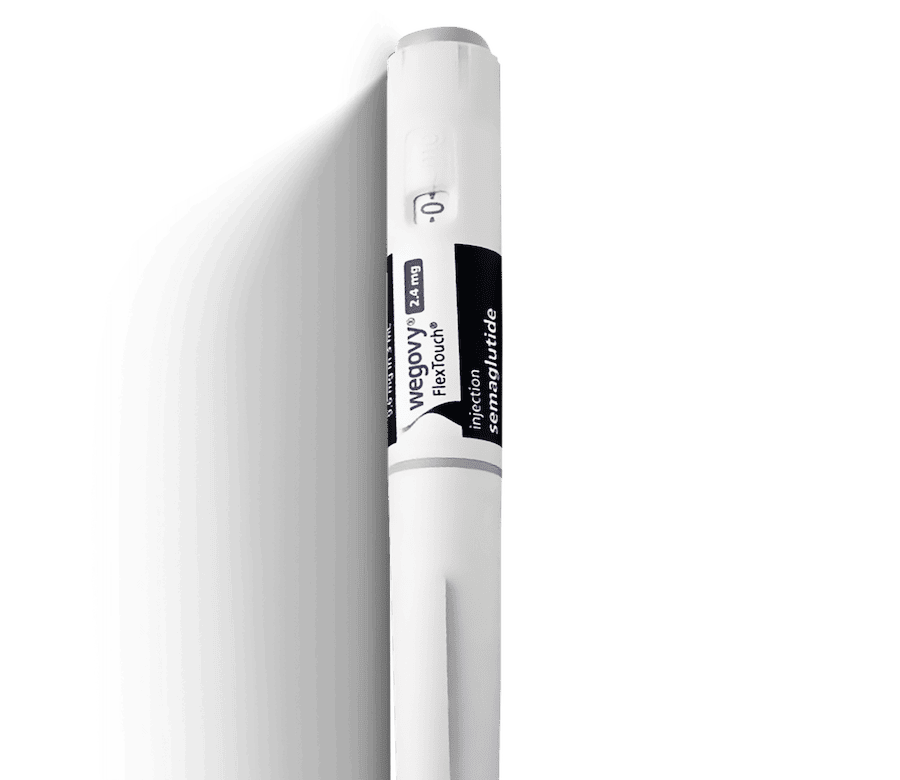



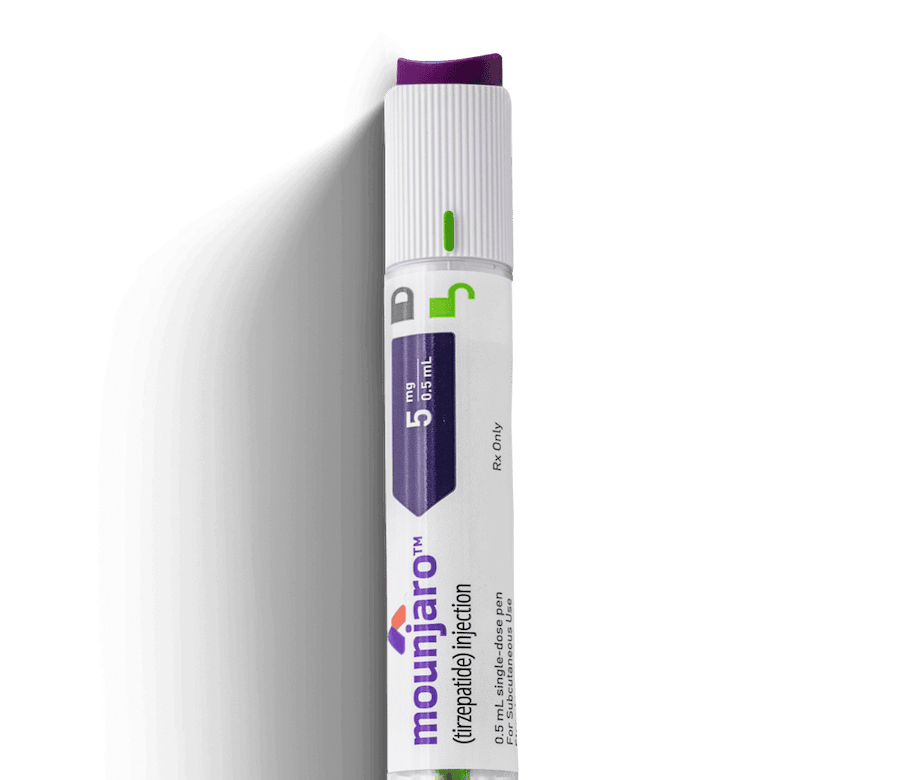
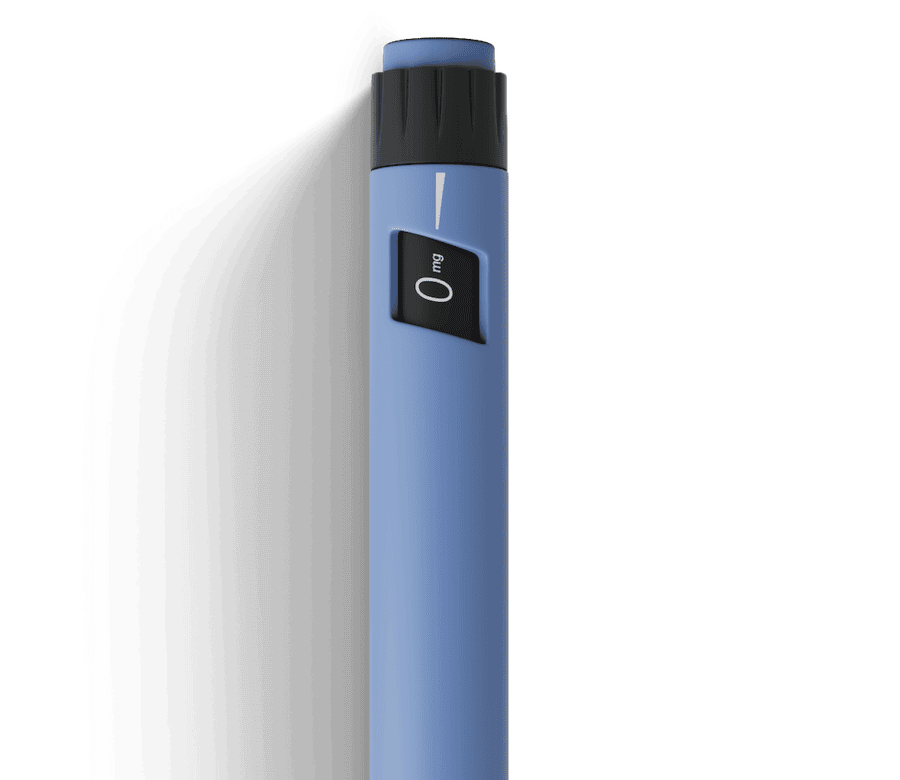
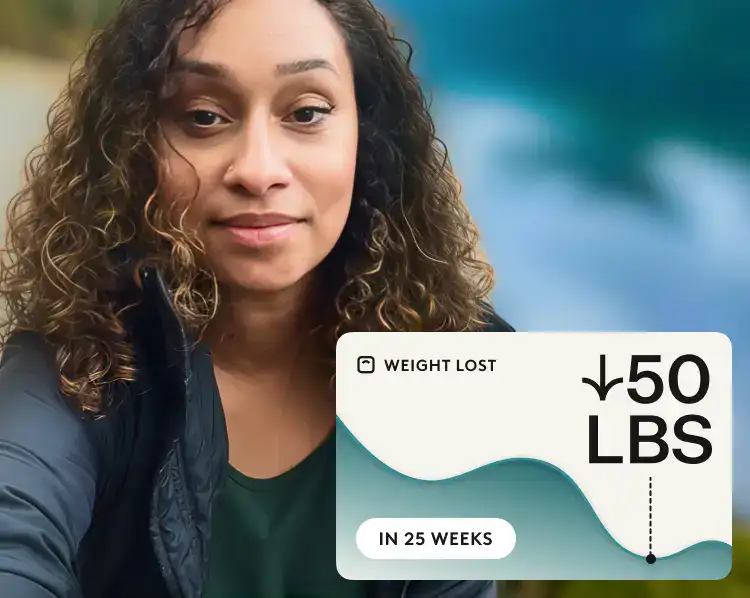
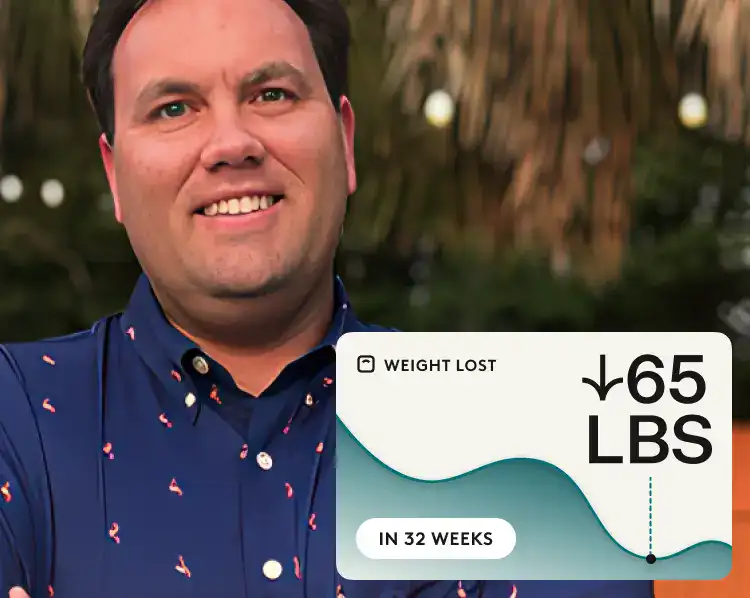

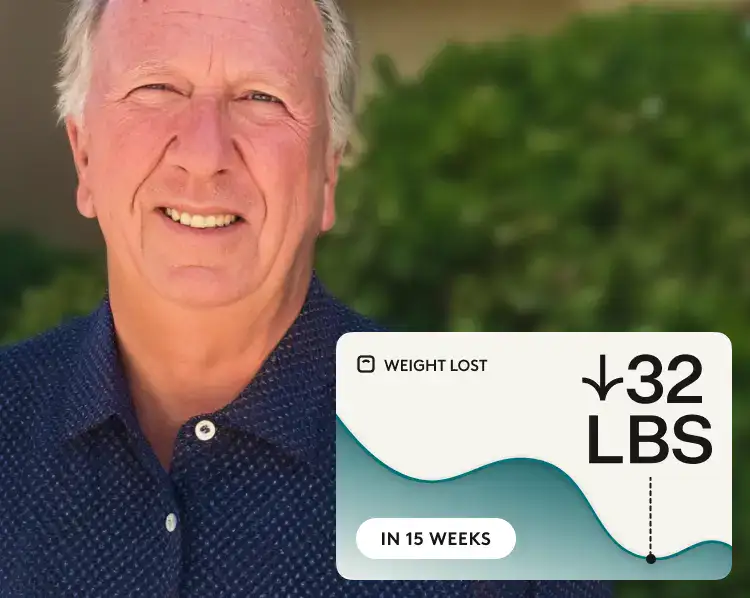
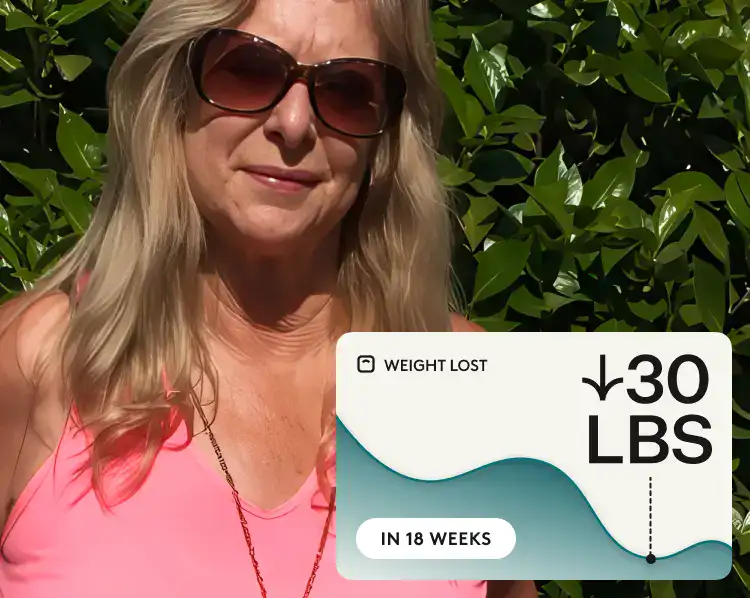


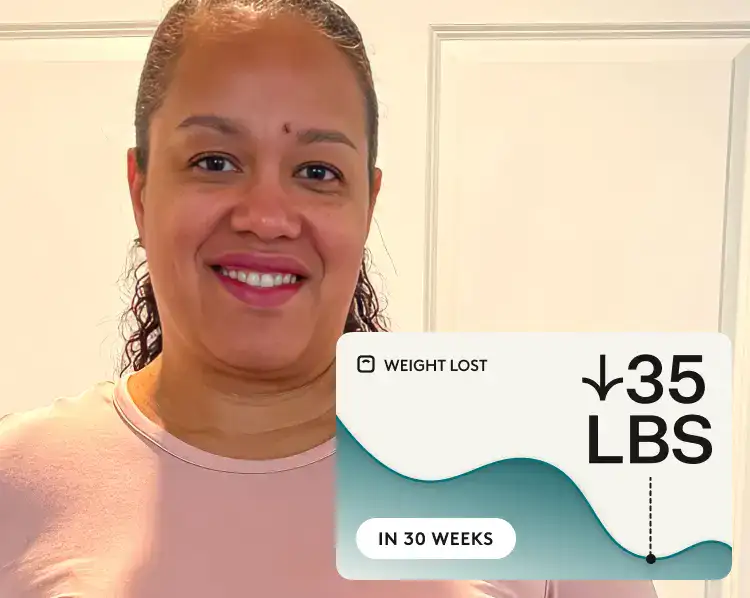
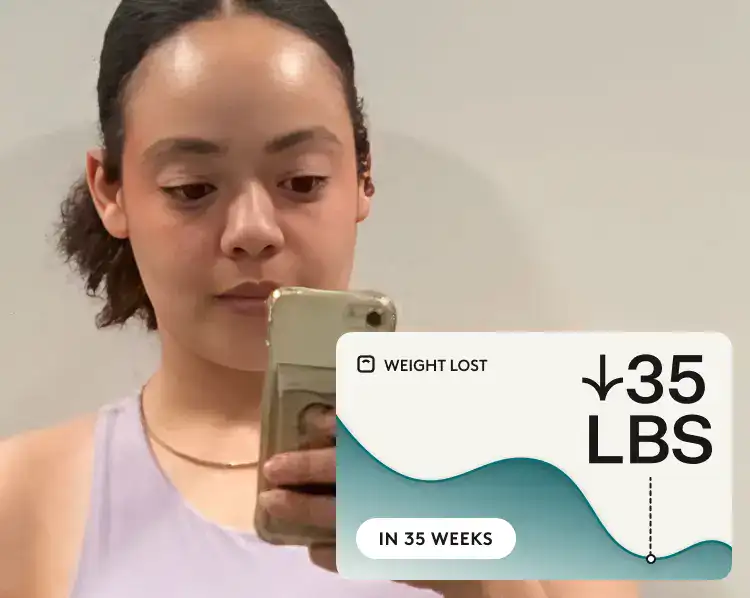



 Shoshana Fishbein
Shoshana Fishbein
 Noom Team
Noom Team

 Meaghan Cameron
Meaghan Cameron

